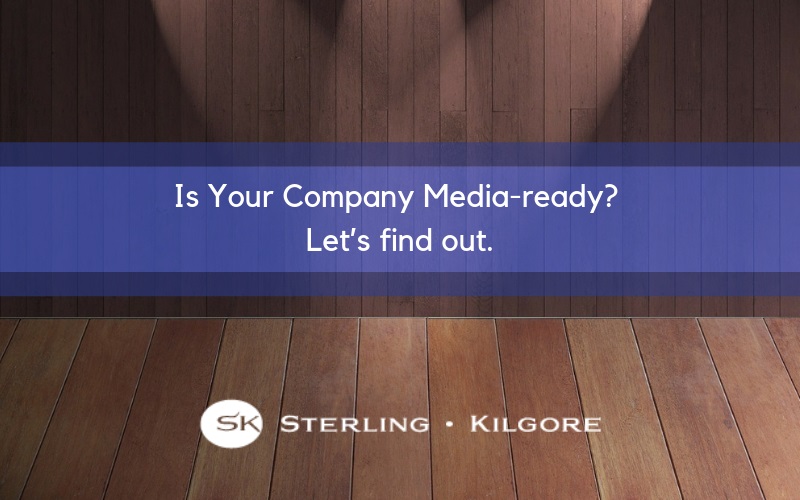Everyone loves positive media coverage. What’s wonderful about it is how it drives interest in your company, which equates to an increase in traffic to your website and social media properties. For many companies, however, this is also what’s bad about it—if they have a less-than-stellar online marketing presence.
Therefore, before securing media coverage, we recommend companies first prepare for the attention that will come from being in the spotlight. This preparation isn’t just about knowing your products and services and being able to talk about them eloquently; and it isn’t solely about having media training so you ace an interview with a reporter. It’s also about being prepared for the influx of activity that comes after a well-targeted piece of media coverage is published or aired, which prompts your prospects to follow through by learning more about you.
When they come to visit your online properties, you want to have the welcome mat out. An excellent media piece is worth significantly less if interested readers, listeners or viewers research your company and find an unprofessional website with unclear messaging or a LinkedIn page with sloppy language and irregular posting. Think of these online go-to resources as the very first impression you will provide people researching your company.
In order to make your media coverage really count, be sure these strategic pieces are in place:
- Company description, key messages and value proposition – Write down these foundational elements so prospects know if you can help them solve their problems, so your staff knows how to frame your offerings and identify the right partnerships, and so your salespeople can SELL! Involving an outside third party in this task (think: PR firm) is critical to help develop messaging that can be understood and valued by someone who isn’t mired in your business. This information will then be ready-made for use on your website, social media properties, direct mailers and anything else you share with the world.
- Your website – This most basic of marketing tools should be appealing to the eye, contain easily-locatable information about who you are and what you do, contain calls to action and contact information, links to your social media platforms, and—these days—host a resource center of valuable educational information such as white papers, blogs, analyst reports, articles, etc. Content like this reinforces you are experts in your field.
- LinkedIn, Twitter, Facebook, Instagram – The number of social media platforms you are on is secondary to the quality you put into to the ones that matter most to your target audience. If your prospects and customers aren’t on Instagram, then don’t get an Instagram account just to put the icon on your website. Again, quality matters, not quantity—each platform you choose to engage on should be done well. In some cases, prospects may go to your LinkedIn profile or Twitter page before your website. Read our many blog posts about social media to find out what I mean by “done well.”
Oh sure, media coverage can happen without key messages, a solid website or any social properties at all, but when the goal of gaining attention in the press is to gain more attention, then it makes sense to set yourself up for success by having your welcome mat out and ready to greet new customers seeking your services.
